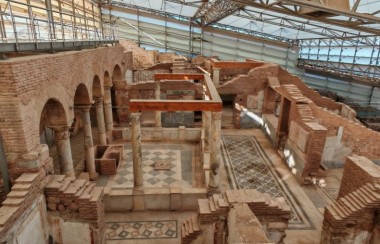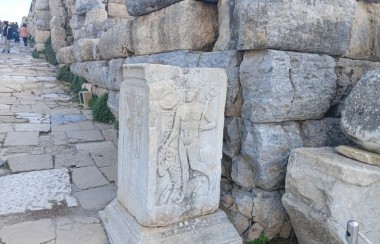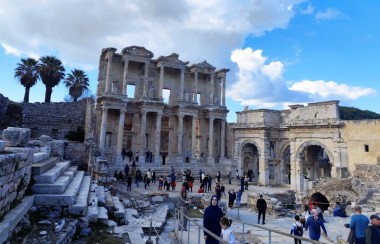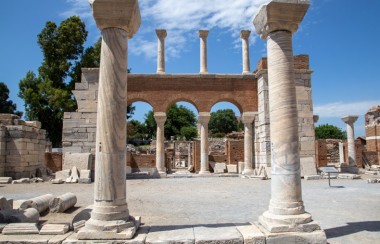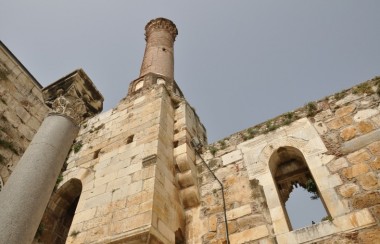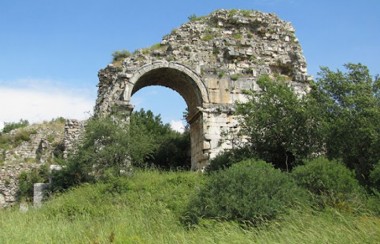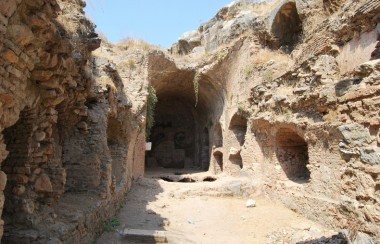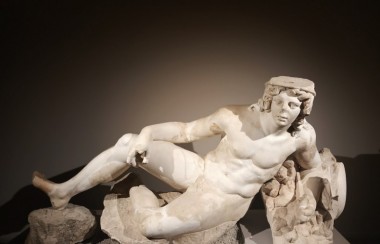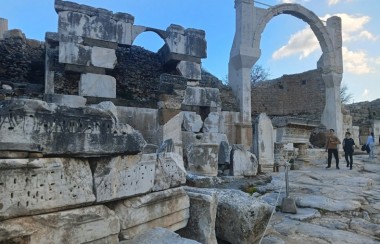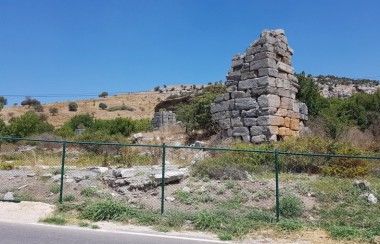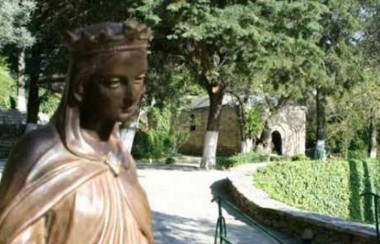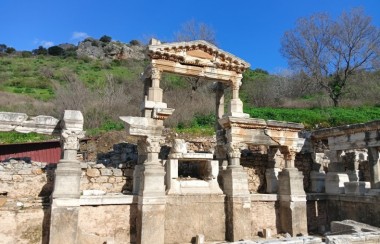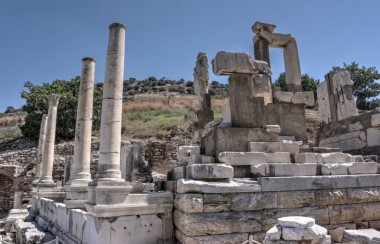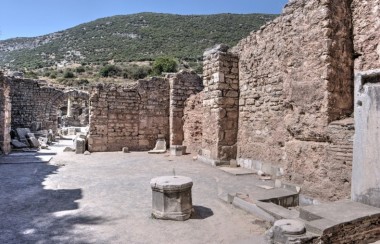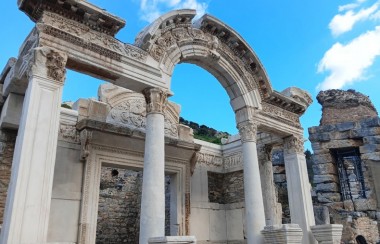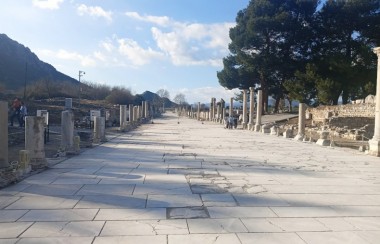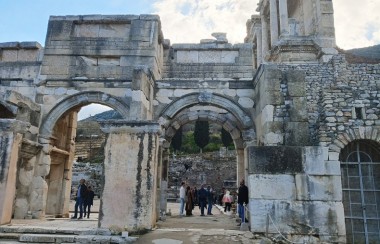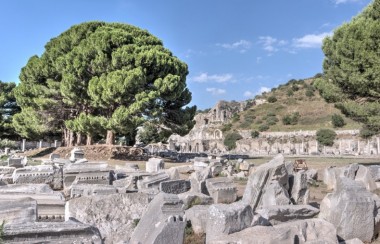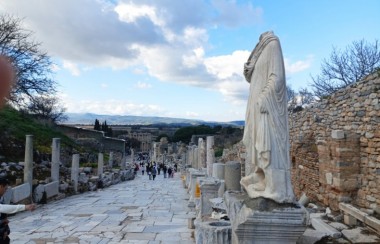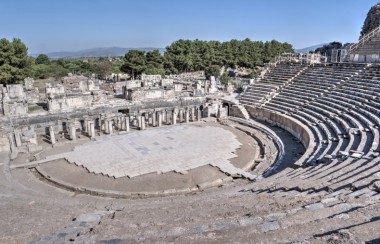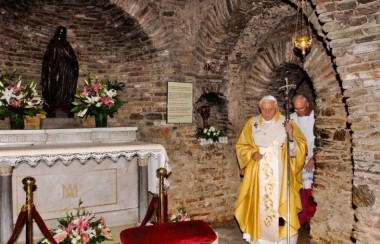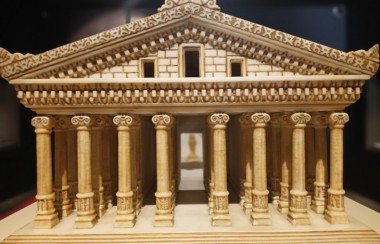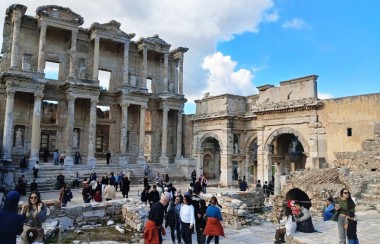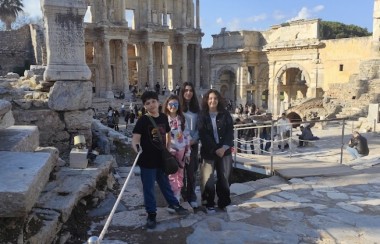-
2025-02-14 01:15:17
-
Go Ephesus
Several wall paintings of the Terrace Houses feature drawings and graffiti which offer an insight into the everyday life of the inhabitants / Terrace House Ephesus
Read More-
2025-02-14 01:06:14
-
Go Ephesus
The heart of the business district of ancient Ephesus was the market square, which acted as a hub for the trade that arrived in the city from across the Empire, /
Read More-
2025-02-14 00:00:24
-
Go Ephesus
Located within what was once the estuary of the River Kaystros, Ephesus comprises successive Hellenistic and Roman settlements founded on new locations /
Read More-
2025-02-13 21:58:09
-
Go Ephesus
Saint John spent the last years of his life in Ephesus. He died around 100 AD and was buried on Ayasoluk Hill. /
Read More-
2025-02-13 21:54:33
-
Go Ephesus
Isa Bey Mosque is located at the southwestern foot of Ayasuluk Hill in Selçuk, between the ancient Artemision and the Basilica of St. John. /
Read More-
2025-02-13 21:44:43
-
Go Ephesus
The stadium of Ephesus is located just to the south of the Vedius Gymnasium, in a depression near the Pion Hill. /
Read More-
2025-02-13 21:39:30
-
Go Ephesus
The legend tells the story of seven young men who were accused of belonging to the Christian community at the time of the persecutions by the Roman Emperor Trajan Decius /
Read More-
2025-02-13 16:18:52
-
Go Ephesus
A visit to Ephesus Archaeological Museum in Selçuk is the perfect complement to the tour of the ruins of the ancient city of Ephesus. /
Read More-
2025-02-13 16:07:07
-
Go Ephesus
Domitian Square is dominated by the Temple of the Imperial Cult and its artificial terrace. /
Read More-
2025-02-13 16:01:42
-
Go Ephesus
The guided tours of Ephesus usually finish with the visit to the area of the State Agora and the monuments surrounding it /
Read More-
2025-02-13 15:52:58
-
Go Ephesus
Ephesus has had a long tradition of being a centre of religious pilgrimage. /
Read More-
2025-02-13 15:47:14
-
Go Ephesus
This monumental building was erected in honour of Artemis of Ephesus and Emperor /
Read More-
2025-02-13 15:42:26
-
Go Ephesus
The remains of the impressive fountain known as the Hydreion occupy a space near the intersection of the Curetes Street and the so-called Terrace House Street. /
Read More-
2025-02-13 15:36:37
-
Go Ephesus
The baths are separated from the latrines and the residential houses by a narrow lane called Academy Street, leading down from the north slope of Panayırdağ. /
Read More-
2025-02-13 15:31:59
-
Go Ephesus
A temple-like monument, known as the Temple of Hadrian, stands in front of the Scholastica Baths, facing the Curetes Street. /
Read More-
2025-02-13 15:23:31
-
Go Ephesus
Arcadiane Street is well preserved and extends for a distance of more than 500 meters, /
Read More-
2025-02-13 15:08:33
-
Go Ephesus
The Commercial Agora had three main gates, enabling access from the north onto Harbour Street, the south-east, and the west. /
Read More-
2025-02-13 14:57:16
-
Go Ephesus
A narrow street, known as Kathodos (The Way Downwards) in the ancient times, led from the Domitian Square in the eastern direction, along the northern side of the State Agora. /
Read More-
2025-02-13 14:49:01
-
Go Ephesus
Curetes Street is one of the main thoroughfares of Ephesus. /
Read More-
2025-02-13 14:40:15
-
Go Ephesus
The great theater of Ephesus is a splendidly preserved and very impressive building /
Read More-
2025-02-13 13:16:21
-
Go Ephesus
Mary, the mother of Jesus, is thought to have spent her last years in Ephesus with Saint John. Her house and John’s tomb can be visited there today. /
Read More-
2025-02-13 13:02:53
-
Go Ephesus
The Lydian King Croesus, who ruled from 560 B.C. to 547 B.C., was most famous for funding the rebuilding of the Temple of Artemis in Ephesus. Artemis was the goddess of the hunt, chastity, childbirth, wild animals and the wilderness. /
Read More-
2025-02-13 11:58:00
-
Go Ephesus
Ephesus is located near the western shores of modern-day Turkey, where the Aegean /
Read More-
2025-02-08 15:56:10
-
Go Ephesus
The Library of Celsus in Ephesus stands as one of the most breathtaking examples of Roman architecture and a testament to the grandeur of ancient civilization. This iconic structure, built in the 2nd century AD, remains a major attraction for history enthusiasts and travelers alike. /
Read More
